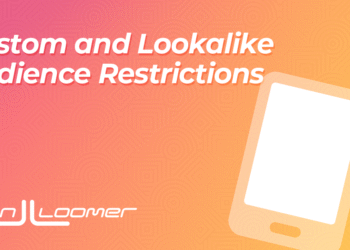The arrival of a new child is one of life’s most profound and transformative experiences. It is a period brimming with joy, adjustment, and a fundamental shift in priorities. However, for working parents, this beautiful chaos is often accompanied by a undercurrent of anxiety: How will we manage financially? Will my job be there when I return? How can I balance the immense demands of a newborn with my professional responsibilities? This delicate balancing act between work and family life is a universal challenge, making a comprehensive understanding of parental leave rights not just a matter of workplace policy, but a cornerstone of family well-being and economic security. Parental leave exists to provide a vital bridge, allowing parents to focus entirely on their family during these critical early months without sacrificing their career or financial stability.
What is Parental Leave? A Detailed Breakdown
Parental leave is a fundamental entitlement designed to support employees during significant family formation events. It is a legally protected period of time away from work granted to eligible employees to care for a newborn or a newly adopted child. In Australia, the parental leave system is a hybrid model, combining a government-funded paid scheme with foundational unpaid entitlements protected under the Fair Work Act 2009. Understanding the components is key to navigating your options effectively.
1. Unpaid Parental Leave: The Foundation of Job Security
This is the bedrock entitlement for most employees in the national workplace system. Eligible employees (those who have completed at least 12 months of continuous service with their employer) are entitled to take up to 12 months of unpaid parental leave. The critical aspect of this leave is job protection; an employee on approved unpaid parental leave has the right to return to their pre-leave position. If that position no longer exists, they are entitled to an available position for which they are qualified that is comparable in pay and status.
A crucial and often underutilised facet of this entitlement is the right to request an additional 12 months of unpaid leave. While employers can refuse this request on “reasonable business grounds,” they cannot do so arbitrarily. The process requires a genuine consideration of the request, and employees have recourse if they believe the refusal is unreasonable. Furthermore, parents have the flexibility to take their leave simultaneously or stagger it to extend the total period a child is cared for at home by a parent.
2. Government-Funded Paid Parental Leave (PPL): Financial Support for Primary Carers
Administered by Services Australia, the Paid Parental Leave scheme is designed to provide financial support to the primary carer of a newborn or adopted child. The current scheme provides:
- 18 weeks of pay at the national minimum wage (as of the 2023-24 financial year, this is $882.75 per week, before tax).
- Eligibility is based on an individual’s adjusted taxable income, family income, and work test in the 13 months prior to the birth or adoption. This payment is directly intended to allow the primary carer—most often the birth mother—to take time off work to recover and bond with their child. It is important to note that this leave can be transferred between partners if the primary carer eligibility changes, supporting more flexible and shared care arrangements.
3. Dad and Partner Pay (DAP): Supporting the Supporting Parent
Recognising that a new child impacts the entire family unit, the government also provides Dad and Partner Pay (DAP). This is a separate payment that provides eligible working partners (including same-sex partners) with 2 weeks of pay at the national minimum wage. This leave is specifically designed to allow partners to be involved from the very beginning, providing crucial practical and emotional support during the often-overwhelming first days and weeks after birth or adoption. It helps partners to be present for important milestones, assist with older children, and share in the caregiving duties from the start.
Why Parental Leave Matters: Beyond the Basic Entitlements
The value of parental leave extends far beyond simply having time off work. It is a critical social and economic investment with far-reaching benefits for parents, children, employers, and society at large.
- Health and Well-being: For birth mothers, paid leave is not a luxury; it is a health necessity. It provides essential physical recovery time from childbirth and reduces the risk of postpartum depression. For all parents, it reduces stress and anxiety by alleviating immediate financial pressure, creating a more stable and nurturing environment for the infant.
- Bonding and Child Development: The early months of a child’s life are a period of rapid brain development and attachment formation. Secure attachment, fostered by consistent and responsive caregiving, is linked to better social, emotional, and cognitive outcomes throughout the child’s life. Parental leave gives parents the uninterrupted time needed to forge this deep, foundational bond.
- Promoting Gender Equity: A robust parental leave system that encourages both parents to participate actively is fundamental to challenging outdated gender norms. When leave is accessible and normalised for fathers and partners, it helps to redistribute domestic and caregiving labour more equally from the beginning. This supports mothers’ workforce participation and career progression and allows fathers to build stronger, more involved relationships with their children.
- Economic Participation and Workforce Retention: For employers, supporting parental leave is a smart business decision. It boosts employee loyalty, morale, and retention, saving significant costs associated with recruiting and training new staff. It allows companies to retain valuable skills and experience, maintaining institutional knowledge. Furthermore, enabling parents, particularly women, to remain connected to the workforce supports national productivity and economic growth.
How Unions Are Instrumental in Securing and Advancing Parental Leave
While the National Employment Standards (NES) provide a safety net, they represent the legal minimum. The journey towards truly generous and flexible parental leave policies has been, and continues to be, driven by the advocacy of unions. Their role is multi-faceted and crucial:
- Negotiating Superior Enterprise Agreements: Unions bargain collectively to secure conditions that are significantly better than the minimum standards. This includes negotiating employer-funded paid parental leave schemes that top up the government payment to the employee’s full salary, often for 14, 18, or even 26 weeks. They also negotiate more flexible return-to-work arrangements, higher rates of pay for partners’ leave, and more accessible provisions for parents of children in special care.
- Ensuring Rights Are Respected: Understanding the legal intricacies of leave notices, eligibility, and return-to-work rights can be daunting. Unions provide expert advice and support to their members navigating this process. If an employer pushes back—for instance, by refusing a flexible return-to-work arrangement or challenging a request for additional leave—the union provides immediate support, representation, and, if necessary, legal intervention to protect the member’s rights.
- Campaigning for Systemic Change: Unions are at the forefront of campaigning for legislative improvements that benefit all working parents, not just their members. This includes successful campaigns to increase the duration of the government PPL scheme and ongoing advocacy for policies like:
- Expanding the PPL scheme to 26 weeks.
- Introducing a dedicated “use-it-or-lose-it” portion of paid leave for partners to further encourage shared care.
- Making leave provisions more accessible for casual workers and those in Parental Leave: Supporting Working Parents in Australia for a Stronger Family and Economic Future
The arrival of a new child is one of life’s most profound and transformative experiences. It is a period brimming with joy, adjustment, and a fundamental shift in priorities. However, for working parents, this beautiful chaos is often accompanied by a undercurrent of anxiety: How will we manage financially? Will my job be there when I return? How can I balance the immense demands of a newborn with my professional responsibilities? This delicate balancing act between work and family life is a universal challenge, making a comprehensive understanding of parental leave rights not just a matter of workplace policy, but a cornerstone of family well-being and economic security. Parental leave exists to provide a vital bridge, allowing parents to focus entirely on their family during these critical early months without sacrificing their career or financial stability.
What is Parental Leave? A Detailed Breakdown
Parental leave is a fundamental entitlement designed to support employees during significant family formation events. It is a legally protected period of time away from work granted to eligible employees to care for a newborn or a newly adopted child. In Australia, the parental leave system is a hybrid model, combining a government-funded paid scheme with foundational unpaid entitlements protected under the Fair Work Act 2009. Understanding the components is key to navigating your options effectively.
1. Unpaid Parental Leave: The Foundation of Job Security
This is the bedrock entitlement for most employees in the national workplace system. Eligible employees (those who have completed at least 12 months of continuous service with their employer) are entitled to take up to 12 months of unpaid parental leave. The critical aspect of this leave is job protection; an employee on approved unpaid parental leave has the right to return to their pre-leave position. If that position no longer exists, they are entitled to an available position for which they are qualified that is comparable in pay and status.
A crucial and often underutilised facet of this entitlement is the right to request an additional 12 months of unpaid leave. While employers can refuse this request on “reasonable business grounds,” they cannot do so arbitrarily. The process requires a genuine consideration of the request, and employees have recourse if they believe the refusal is unreasonable. Furthermore, parents have the flexibility to take their leave simultaneously or stagger it to extend the total period a child is cared for at home by a parent.
2. Government-Funded Paid Parental Leave (PPL): Financial Support for Primary Carers
Administered by Services Australia, the Paid Parental Leave scheme is designed to provide financial support to the primary carer of a newborn or adopted child. The current scheme provides:
- 18 weeks of pay at the national minimum wage (as of the 2023-24 financial year, this is $882.75 per week, before tax).
- Eligibility is based on an individual’s adjusted taxable income, family income, and work test in the 13 months prior to the birth or adoption. This payment is directly intended to allow the primary carer—most often the birth mother—to take time off work to recover and bond with their child. It is important to note that this leave can be transferred between partners if the primary carer eligibility changes, supporting more flexible and shared care arrangements.
3. Dad and Partner Pay (DAP): Supporting the Supporting Parent
Recognising that a new child impacts the entire family unit, the government also provides Dad and Partner Pay (DAP). This is a separate payment that provides eligible working partners (including same-sex partners) with 2 weeks of pay at the national minimum wage. This leave is specifically designed to allow partners to be involved from the very beginning, providing crucial practical and emotional support during the often-overwhelming first days and weeks after birth or adoption. It helps partners to be present for important milestones, assist with older children, and share in the caregiving duties from the start.
Why Parental Leave Matters: Beyond the Basic Entitlements
The value of parental leave extends far beyond simply having time off work. It is a critical social and economic investment with far-reaching benefits for parents, children, employers, and society at large.
- Health and Well-being: For birth mothers, paid leave is not a luxury; it is a health necessity. It provides essential physical recovery time from childbirth and reduces the risk of postpartum depression. For all parents, it reduces stress and anxiety by alleviating immediate financial pressure, creating a more stable and nurturing environment for the infant.
- Bonding and Child Development: The early months of a child’s life are a period of rapid brain development and attachment formation. Secure attachment, fostered by consistent and responsive caregiving, is linked to better social, emotional, and cognitive outcomes throughout the child’s life. Parental leave gives parents the uninterrupted time needed to forge this deep, foundational bond.
- Promoting Gender Equity: A robust parental leave system that encourages both parents to participate actively is fundamental to challenging outdated gender norms. When leave is accessible and normalised for fathers and partners, it helps to redistribute domestic and caregiving labour more equally from the beginning. This supports mothers’ workforce participation and career progression and allows fathers to build stronger, more involved relationships with their children.
- Economic Participation and Workforce Retention: For employers, supporting parental leave is a smart business decision. It boosts employee loyalty, morale, and retention, saving significant costs associated with recruiting and training new staff. It allows companies to retain valuable skills and experience, maintaining institutional knowledge. Furthermore, enabling parents, particularly women, to remain connected to the workforce supports national productivity and economic growth.
How Unions Are Instrumental in Securing and Advancing Parental Leave
While the National Employment Standards (NES) provide a safety net, they represent the legal minimum. The journey towards truly generous and flexible parental leave policies has been, and continues to be, driven by the advocacy of unions. Their role is multi-faceted and crucial:
- Negotiating Superior Enterprise Agreements: Unions bargain collectively to secure conditions that are significantly better than the minimum standards. This includes negotiating employer-funded paid parental leave schemes that top up the government payment to the employee’s full salary, often for 14, 18, or even 26 weeks. They also negotiate more flexible return-to-work arrangements, higher rates of pay for partners’ leave, and more accessible provisions for parents of children in special care.
- Ensuring Rights Are Respected: Understanding the legal intricacies of leave notices, eligibility, and return-to-work rights can be daunting. Unions provide expert advice and support to their members navigating this process. If an employer pushes back—for instance, by refusing a flexible return-to-work arrangement or challenging a request for additional leave—the union provides immediate support, representation, and, if necessary, legal intervention to protect the member’s rights.
- Campaigning for Systemic Change: Unions are at the forefront of campaigning for legislative improvements that benefit all working parents, not just their members. This includes successful campaigns to increase the duration of the government PPL scheme and ongoing advocacy for policies like:
- Expanding the PPL scheme to 26 weeks.
- Introducing a dedicated “use-it-or-lose-it” portion of paid leave for partners to further encourage shared care.
- Making leave provisions more accessible for casual workers and those in non-traditional work arrangements.
- Strengthening protections against discrimination for pregnant employees and those on leave.
Building Fairer, More Family-Friendly Workplaces
The fight for comprehensive parental leave is fundamentally about building a more equitable and compassionate society. It acknowledges that work is a part of life, not separate from it, and that supporting employees during major life events is a shared responsibility between government, employers, and the community. Unions are the driving force in transforming workplaces into environments where families can truly thrive, not just survive.
If you or your partner are preparing for a new addition to your family, proactive planning is essential. Do not assume your employer is fully across the rules or your entitlements. Investigate your rights, understand the deadlines for lodging government payments, and consider your options for a flexible return to work. The most powerful step you can take to ensure you are supported and your rights are protected every step of the way is to join your union. With collective strength and expert guidance, you can confidently navigate this exciting new chapter, secure in the knowledge that your family’s well-being is prioritised.
- non-traditional work arrangements.
- Strengthening protections against discrimination for pregnant employees and those on leave.
Building Fairer, More Family-Friendly Workplaces
The fight for comprehensive parental leave is fundamentally about building a more equitable and compassionate society. It acknowledges that work is a part of life, not separate from it, and that supporting employees during major life events is a shared responsibility between government, employers, and the community. Unions are the driving force in transforming workplaces into environments where families can truly thrive, not just survive.
If you or your partner are preparing for a new addition to your family, proactive planning is essential. Do not assume your employer is fully across the rules or your entitlements. Investigate your rights, understand the deadlines for lodging government payments, and consider your options for a flexible return to work. The most powerful step you can take to ensure you are supported and your rights are protected every step of the way is to join your union. With collective strength and expert guidance, you can confidently navigate this exciting new chapter, secure in the knowledge that your family’s well-being is prioritised.













